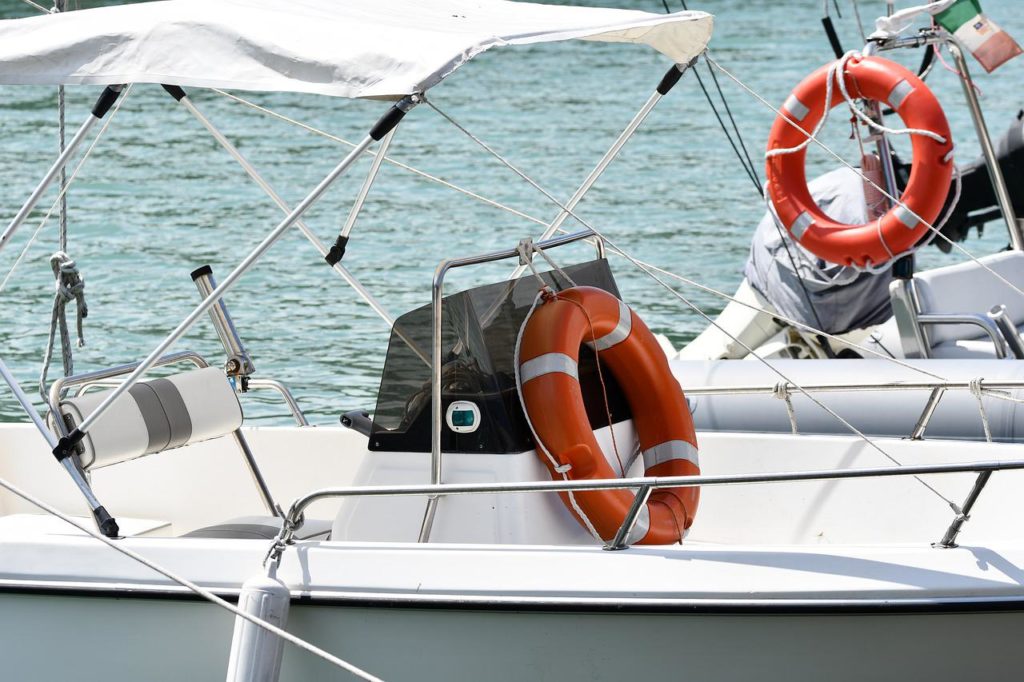The Texas Hill Country is a water recreation playground. There are many opportunities to enjoy the Colorado River, Lake Austin, or the beautiful Lake Travis by boat. While having a fun and relaxing day on the water is meaningful, so is everyone’s safety. We’ve put together seven important boat safety tips so you, your friends, and your family can have a fun yet safe day on the water!
1. Have A Boat Safety Kit
A few items can make all the difference during an emergency, so being prepared is of the utmost importance. Here are a few essential items and pieces of equipment to put in your boat safety kit:
- whistle
- air horn
- mirror
- first aid kit
- flashlight
- ropes
- throwable personal floatation device
In addition, boaters are required by Texas law to carry a fire extinguisher on board. If you have the space, duck tape, a bucket, blankets, and emergency rations can also make a great addition to your boat safety kit. While these items could be useful, feel free to personalize your kit with anything else you think you might need in an emergency as space provides.
2. Wear a Personal Flotation Device (PFD)
A common phrase in the water recreation world is, “Make sure to wear your lifejacket.” And for a good reason. A lifejacket or PFD is intended to keep you afloat during an unfortunate situation. Not only is wearing a life jacket a good idea but by law, a PFD is required for each person on board a boat. In addition, most states require children to wear a PFD at all times. So make sure to find one that properly fits and is comfortable to wear while on the water.
3. Follow Rules & Regulations
While there are some universal rules and regulations that pertain to operating a boat, specific bodies of water may have their own rules and regulations. Check the local laws and ordinances of the body of water before planning a boating trip. Once on the water, be aware of speed and wake zones when navigating a river or lake. These are set in place to ensure the safety of recreational users and shoreline wildlife.
4. Use an Engine Cut-off Switch (ECOS)
An engine cut-off switch or ECOS is a physical or electronic device connected to the boat’s driver. If the driver falls overboard, the ECOS is engaged, and the boat motor will shut off. In April of 2021, a federal law was passed requiring the use of ECOS for boats under 26 feet in length.
5. Be Mindful of Weather & Your Surroundings
Before heading out on the water for the day, it’s a good idea to check the forecast. Some critical factors that will contribute to the safety of your boating experience are wind speed and direction, wave height, and, most importantly, expected storms.
Even before your boat hits the water, there are some mindful tips to be aware of. Boat landings tend to be a busy place on the weekends. As you prepare to unload, be aware of other users and recreationists in the area. And once you’re on the water, regardless of a river or lake, there may be other boaters, paddleboarders, kayakers, or swimmers recreating nearby, so always be on the lookout.
6. Take a Boater’s Education Course
If you’re new to boating, taking a free boater education course for some general boating safety tips might be a good idea. Boater education courses can be found online, whether through Texas Parks & Wildlife or a local organization. So sharpen your boating skills before heading out for a fun day on the water!
7. Clean, Drain, and Dry Your Boat
Last but not least, after a fun day on the water, make sure to pull your boat plug before leaving the vicinity of a lake, river, or bay. Boaters in Texas are required by law to remove any visible plants and animals and practice the Clean, Drain, and Dry procedures on all watercraft and trailers. This safety procedure minimizes the chances of accidental transfer of invasive species such as zebra mussels to other bodies of water.
Are you ready to head out on the water? Check out Lakeside at Tessera’s newest amenity, a private boat launch on Lake Travis. Contact our office today to book a tour and begin searching for your Texas Hill Country home!

